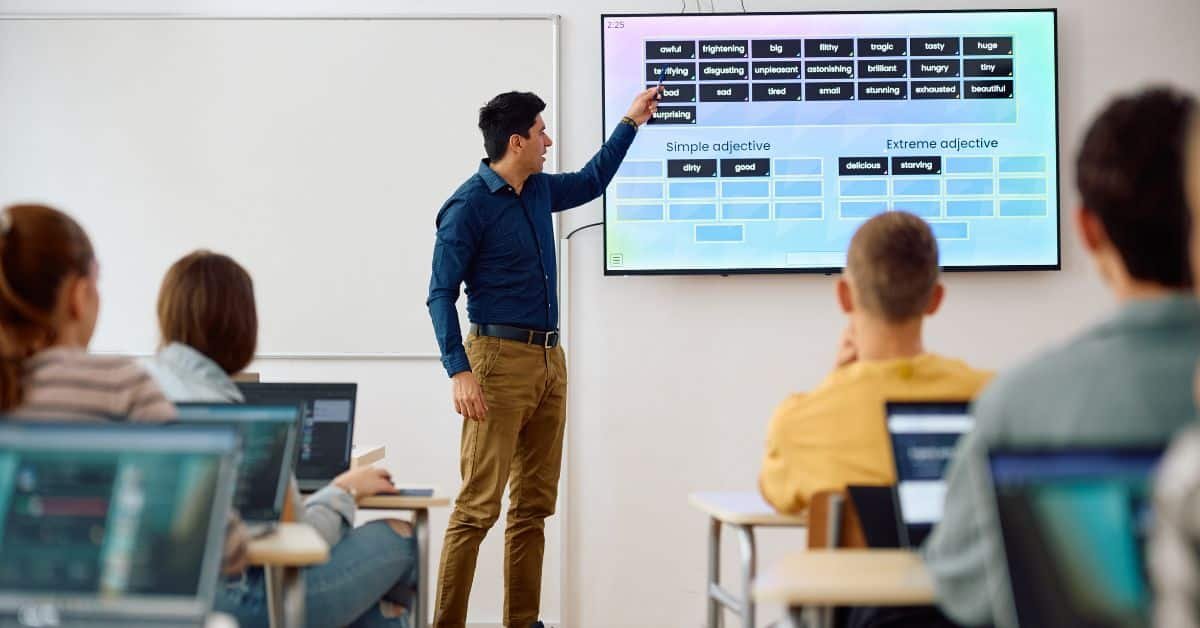While traditional teaching has its merits, today’s students are wired for a more visual world. The challenge for many schools isn’t just keeping students engaged but doing so without breaking the bank. Thankfully, turning a classroom into an interactive, visual learning hub doesn’t require an expansive budget. Let’s dive into five affordable tech tools that can make lessons pop and help complex ideas click for every student.
Interactive Whiteboards
Interactive whiteboards, or smart boards, transform a standard classroom display into a dynamic, touch-sensitive surface. Teachers can write, draw, and manipulate images directly on the board, making lessons more engaging.
Interactive whiteboards often include software that allows teachers to save and share lessons with students. Many models are compatible with tablets and laptops, enabling seamless integration with other classroom technology.
Students can also interact with the content, including solving math problems or labeling diagrams in front of the class. While high-end models can be expensive, many companies offer more budget-friendly options. Some schools even use projectors that can turn any whiteboard into an interactive screen, providing similar functionality at a lower cost.
Graphic Design Software
Free or low-cost graphic design software gives students the tools to create their own visuals. Platforms such as Canva or Piktochart have user-friendly interfaces that allow them to design presentations, infographics, and posters.
Creating visual materials helps students process information and present it compellingly. This approach develops digital literacy and creativity. Many of these programs also offer free versions for schools, making this tech solution more affordable for visual learning.
Plotters and Large-Format Printers
While the initial investment for a plotter or large-format printer may seem high, they offer long-term value for schools. These printers are great educational tools that enhance learning with oversized posters, maps, and diagrams that make complex information easier to digest.
Schools can print materials for multiple subjects, from detailed historical timelines to large anatomical charts. The cost per print is often low, and sharing the printer between departments makes it a cost-effective solution over time.
Document Cameras
Document cameras are simple yet effective tools for visual learning. These devices project an image of a document, textbook page, or 3D object onto a larger screen. A teacher can show a science experiment step-by-step or walk through a math equation for the whole class to see clearly.
Document cameras allow every student to have a front-row view, which is especially useful for detailed demonstrations. They are generally less expensive than interactive whiteboards and are easy to set up and use.
Tablets and Mobile Devices
Many schools already have tablets or allow students to use their own devices. These gadgets can serve as powerful learning aids with the right applications. Educational apps offer interactive simulations, digital models, and virtual field trips that bring subjects to life. For example, students can explore the solar system or dissect a virtual frog.
Tablets often include built-in accessibility features, helping students with diverse needs. Teachers can also track student progress and tailor assignments through various educational apps. With many free and low-cost educational apps available, tablets are among the most versatile and affordable technological tools for visual learning in schools.
By choosing the right solutions, schools can create more dynamic and effective learning environments. Explore these choices to find what works best for your classroom, and help your students succeed.
Explore more articles:
Essential Features for a Tech-Forward Office
5 Ways To Extend the Life of Business Tech and Equipment
The Overlooked Tech That Keeps Our Modern World Running
The Advantages of Smart Solenoid Systems in Facilities

At CIO TechWorld, I architect global revenue strategy, cultivate enterprise alliances, and engage directly with CXO leaders shaping the future of technology.
Operating at the convergence of editorial intelligence, commercial strategy, and executive influence, I specialize in transforming complex business objectives into authoritative market presence.








